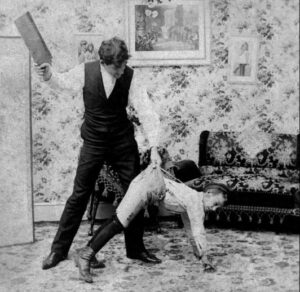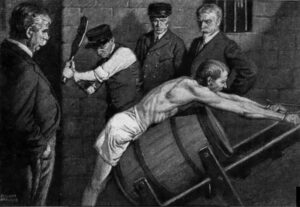The question of where the paddle originated is not only complex and ambiguous but also seemingly unanswered. I have simply gathered the versions I found, and it’s up to you to decide which one you prefer.

Version One.
Some English-language sources agree that the paddle (a tool for corporal punishment) was created in the United States and was originally intended for punishing slaves, with the main goal being to avoid long-lasting marks that could lead to legal repercussions for the executor. It is presumed that the paddle was invented in Virginia, and its working surface was perforated with small holes. There are mentions that the early paddles had a flexible handle, though no substantial evidence of this fact has been found. There are accounts that a plantation-style paddle could easily knock someone unconscious without inflicting injury, breaking bones, or even cutting the skin.

Version Two.
The precursor to all paddles was the cobbing board, a wooden tool used by sailors in the navy. They were made from wooden planks from barrels and were common somewhere in the 18th century. However, the word “paddle” was not in use at that time. Notably, the cobbing board was employed for the lightest offenses. To make it, a board was taken that had a hole for a plug (or faucet) to make the strike more powerful. When struck with a full board, an “air cushion” softened the impact. Over time, holes began to be added “for flavor.”
It was these sailors who brought the paddle to the United States: initially, future slaves were beaten at sea, attempting to maintain their marketable appearance and value, and later the tool was adopted by buyers, who modified it for their own needs: the shape changed, and a handle was added.

Version Three.
The most obscure version relates exclusively to the school paddle. There is limited but still documentary evidence that the term “paddle” for some unknown reason came to denote a wooden variety of “ferula,” brought by teachers from the Old World. For a time, the words were synonyms, but at some point, one word completely replaced the other (but certainly no later than the 1830s).

